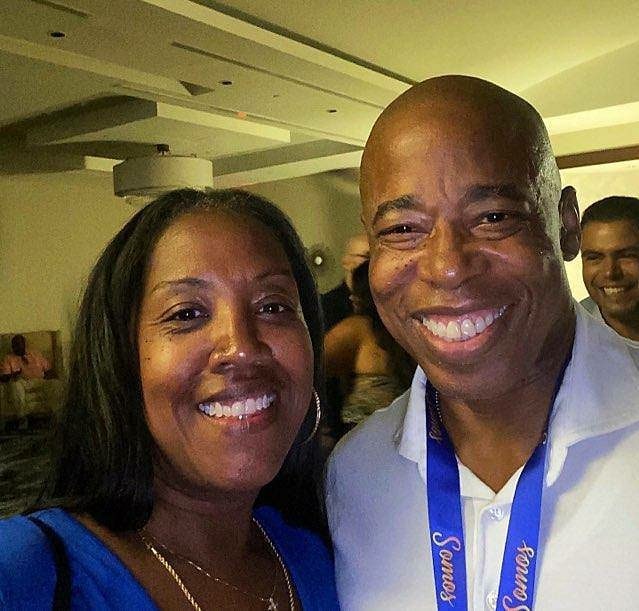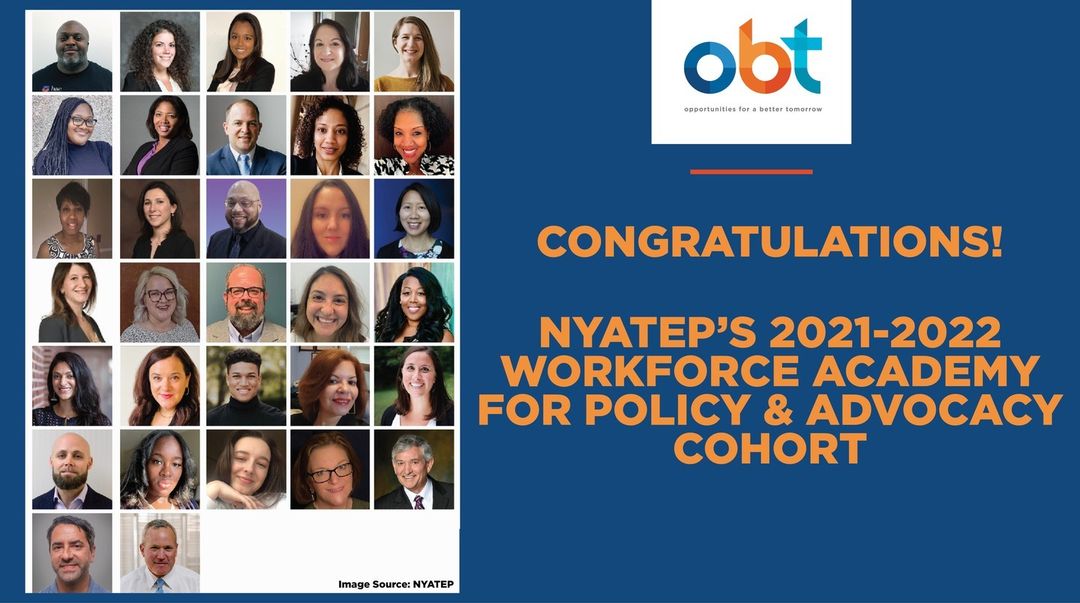Since coronavirus lockdown measures went into effect in March, the number of jobless residents in New York has surged: so far, the state has processed more than 2 million unemployment benefit applications, while the unemployment rate in the city alone jumped from 4.1 to 14.2 percent from March to April, according to Labor Department data.
And while much attention has been paid to the plight of the unemployed, advocates say another crisis is unfolding among the network of organizations that train, support and connect those job seekers with work. The city’s workforce development sector — nonprofits that aid more than half a million residents a year with things like resume prep, vocational training and certification programs — say they’re seeing unprecedented need. But they’re also facing their own financial hardships as a result of the pandemic, and many worry they’ll be forced to make cuts and service reductions that will hamper their ability to respond to the crisis.
“They’re dipping into whatever reserves they have to really serve the community. So we’re certainly more worried than ever about the financial stability of the sector,” says Michelle Jackson, executive director at the Human Services Council(HSC), an advocacy network of human services organizations, including those that offer workforce services.
Such nonprofits rely largely on government funding and contracts, and are facing an uncertain future as budget cuts loom. A report published earlier this month by HSC and the NYC Employment and Training Coalition (NYCETC) found that two-thirds of the workforce organizations it surveyed said they will likely need to lay off staff as a result of the pandemic. More than half said they may need shut down programs temporarily, while two-thirds say they’ll likely need to reduce the services they offer.
These hardships threaten not just the survival of these organizations, but the city’s ability to recover from the economic crisis and ensure people can be trained and ready to get back to work as soon as quarantine restrictions allow for it.
“We play an integral role in the recovery effort, more than we’ve needed it in the past,” says Jose Ortiz, Jr., executive director of NYCETC. “People who are falling out of the workforce require significant retraining in order to get back into the system.”
More need than ever
Opportunities for a Better Tomorrow, a workforce development organization which runs high school equivalency and skills training programs as well as ESL and adult literacy classes, has been forced to stretch its resources to respond to the pandemic.
“Our counselors are working around the clock. They’re answering calls, text messages, emails … Just trying to say on top of what the needs are,” says Liliana Polo-McKenna, OBT’s Chief Executive Officer.
In recent months, those needs include getting clients tech equipment so they can access online classes, hosting weekly webinars to assist them with things like filing for unemployment, and referring participants to city resources for emergency food programs and other services.
“We, like everyone else, needed to shift on a dime,” says Polo-McKenna. For the first time, OBT launched its own emergency fund to offer cash assistance directly to clients who were struggling, she adds. “Frankly, we were concerned about food.”
The city’s workforce development sector serves some of its most vulnerable populations, including those hard hit by COVID-19. Of the nonprofits surveyed by NYCETC, more than half have at least 100 people enrolled in current programs; 89 percent of those served by these groups are New Yorkers of color. City residents of color have also faced the highest percentage of job losses during the pandemic, the same report notes.
Nonprofits are also now seeing new clients pass through their doors, not just for workforce groups but across the entire human services sector, as more residents face food, job and housing insecurity.
“We’re all a disaster away from needing human services. A lot of people with good middle class jobs have lost their jobs,” says Jackson, of HSC. “It’s a huge swath of our population who have never come through human services before are coming to us now.”
Years of underinvestment
Despite the pandemic, OBT has continued to offer nearly all of its programming remotely, with the exception of a masonry program at Greenwood Cemetary “that obviously couldn’t happen right now,” Polo-McKenna says.
Still, she says the organization is worried about what the future will look like, as both the city and state are planning billions in budget cuts to offset funding shortfalls spurred by the pandemic. She’s “incredibly concerned” about future government discretionary funding, which supports many of their skills and literacy programs.
“How will we be able to respond to the need with even less resources than we have now? I think a lot of organizations — the city is asking itself that question,” Polo-McKenna says. “We will need to scale [up] programming in an environment that all signs point to being pretty bare bones.”
For more than a third of NYCETC’s member organizations, city and state contracts account for more than half of their budget, the group says. Some workforce organizations are already feeling the impact of cuts: Last month, Mayor de Blasio announced the city was cancelling this year’s Summer Youth Employment Program, meaning the loss not only of 75,000 jobs for young people but also the funding doled out to the nonprofits that administer the program. That will mean layoffs at some youth employment organizations, according to Jackson, including one she knows of that anticipates needing to cut about 300 jobs.
“We’re very worried. Once we close those programs completely, it’s much harder for nonprofits to cycle back up — it’s not like closing a storefront. You can’t just open it back up three months later,” she says.
Advocates say the challenge is compounded by the fact that workforce nonprofits were already on unsteady financial footing before the pandemic, the result of what they say has been decades of underinvestment on all levels of government.
“Federal funding for workforce development has been decreasing for the last 40 years, and that’s been an ongoing trend,” Ortiz says. The city, too, “has been underfunding specific sections of their own workforce development plan,” he adds, including under investment in initiatives like bridge programs that train New Yorkers in basic skills to help them access the workforce.
Government contracts to social service organizations routinely underfund the cost of those services, according to Jackson: Such contracts typically pay 80 cents on the dollar, an HSC report from 2015 found.
“A for-profit business would never work with government for the rates that nonprofits get paid to,” she says, despite the “really critical services” these nonprofits provide.
“None of the issues that are sort of bubbling up are new ones,” Polo-McKenna echoes. “It just magnifies the ones that are already there.”
On the front lines of economic recovery
Advocates within the industry say the government should act now to bolster its workforce sector as part of its COVID-19 economic recovery efforts. On the federal level, that should include expanded funding for employment programs under the Workforce Innovation and Opportunity Act, Jackson says.
For the city and state, that means keeping social service budgets intact as well as undertaking other efforts to support the industry: providing cash advances to workforce organizations, forgiving nonprofit debt and allowing groups more flexibility in how they can spend contracted funding.
As part of its pandemic recovery efforts, Mayor de Blasio has announced a number of task forces whose members will “inform the administration’s efforts to restart the economy and city life.” They include a “Non-Profit and Social Services Sector Advisory Council,” whose members were appointed earlier this month.
Stakeholders across the industry have also formed a pandemic recovery association, the NY Workforce Recovery Strategy Group, and plan to issue their own recommendations in the coming months for bolstering New York’s economy post-coronavirus.
“We need to put really tangible policies in place that are going to ensure that the workforce is very essentially attached to the recovery, and it’s not disconnected,” Ortiz says.
As New York emerges from the crisis and entire industries, such as hospitality and food service, remain hobbled by social distancing requirements, job training programs will be needed more than ever to adapt to the changed labor market.
“People have lost jobs that are not going to come back. There’s going to be a whole swath of jobs that are going to look really different,” post-pandemic, Jackson says.
“People are going to need a lot of workforce help, so we need to be investing in those fields,” she adds. “A cut now to save some money is going to delay the economic recovery of New York.”



